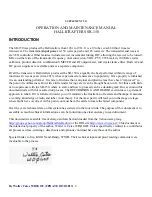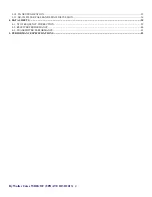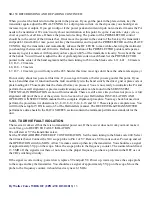
By Walter Cates WD0GOF (UPDATE 10/30/2013)
7
SR-150 REFURBISHING AND REPAIRING CONTINUED:
1-6-1. CARRIER OSCILLATOR:
The carrier oscillator is comprised of V10 and its associated circuitry. First thing is to check the output of the
carrier osc in both USB and LSB modes. After warm up you should have approximately 30 Vpp on pin 7 of
V6. Now adjust T4 for max. The voltage on pin 4 or 3 of T4 should be 9 Vpp. If these voltages are more than
10% low then you most likely have a fault in the oscillator and this fault must be corrected before you proceed.
Once you are satisfied with the oscillator output set the function switch to USB. Connect a scope to pin 7 of V6
to monitor the output voltage of the osc. Connect the frequency counter to either pin 4 or 3 of T4. You will find
that if you adjust T4 in one direction from the peak the signal drops off very fast. In the other direction it falls
more slowly. T4 should be adjusted about 2% to 5% off peak toward the slow fall off side. Switch back and
forth from USB to LSB to insure both oscillators start without any hesitation. In USB mode adjust C106 for
exactly 1651.70 KHz. Switch to LSB mode and adjust C103 for exactly 1648.1 KHz. Adjustment of T4 and
C106 and C103 can interact. Re-check the output voltage and re-check the frequency back and forth several
times to insure that everything is stable and there is no hesitation in the oscillator startup.
1-6-2. HETERODYNE OSCILLATOR:
The Het Osc is comprised of V8 and its associated circuitry. This oscillator is the most troublesome of the three.
There are not any adjustments to pull the frequency of each xtal. So if you do not have a box of spare xtals you
are rather limited in what you can do to put it precisely on frequency. First thing, check the oscillator output.
Connect the scope to the tie point of C80 and CR2 which are located in the cathode ckt of V8. The minimum
peak to peak voltages for each band should be: 80 meters 10 Vpp, 40 meters 11.5 Vpp, 20 meters 6 Vpp, 15
meters 5.5 Vpp, 10 meters (all 4 bands) 5.0 Vpp
If the output does not meet these minimums then this repair
must
be accomplished before proceeding. Once you
are satisfied with the oscillator output disconnect the scope and connect the frequency counter to the tie point of
C80 and CR2 and check the frequency on each band. If the xtal frequencies are
all
high or
all
low then
swapping out C74, C 76 and C77 may bring them back in spec. With the four 10 meter xtals you are pretty
much stuck with where ever they are unless you have a bag of xtals to swap. For the 80, 40, 20 and 15 meter
bands, each band has a warping cap (C73, C72, C71 and C70 respectively). These warping caps can be swapped
out to pull individual xtals on to frequency. The end unit frequency spec is + or – 3 KHz at any dial point across
any band. With the VFO and Carrier oscillators dead on whatever error you have in the heterodyne oscillator is
what you will have to live with
Содержание SR-150
Страница 18: ...By Walter Cates WD0GOF UPDATE 10 30 2013 18...
Страница 19: ...By Walter Cates WD0GOF UPDATE 10 30 2013 19 BEFORE CLEANING CLEAN CHASSIS...
Страница 20: ...By Walter Cates WD0GOF UPDATE 10 30 2013 20 3 1 2 TUBE SOCKET CLEANING KIT...
Страница 21: ...By Walter Cates WD0GOF UPDATE 10 30 2013 21 3 1 3 AIR VARIABLE CLEANING...
Страница 30: ...By Walter Cates WD0GOF UPDATE 10 30 2013 30 3 5 5 K3 WIRING AND PIN OUT...
Страница 38: ...By Walter Cates WD0GOF UPDATE 10 30 2013 38 4 DATA SHEETS...






















